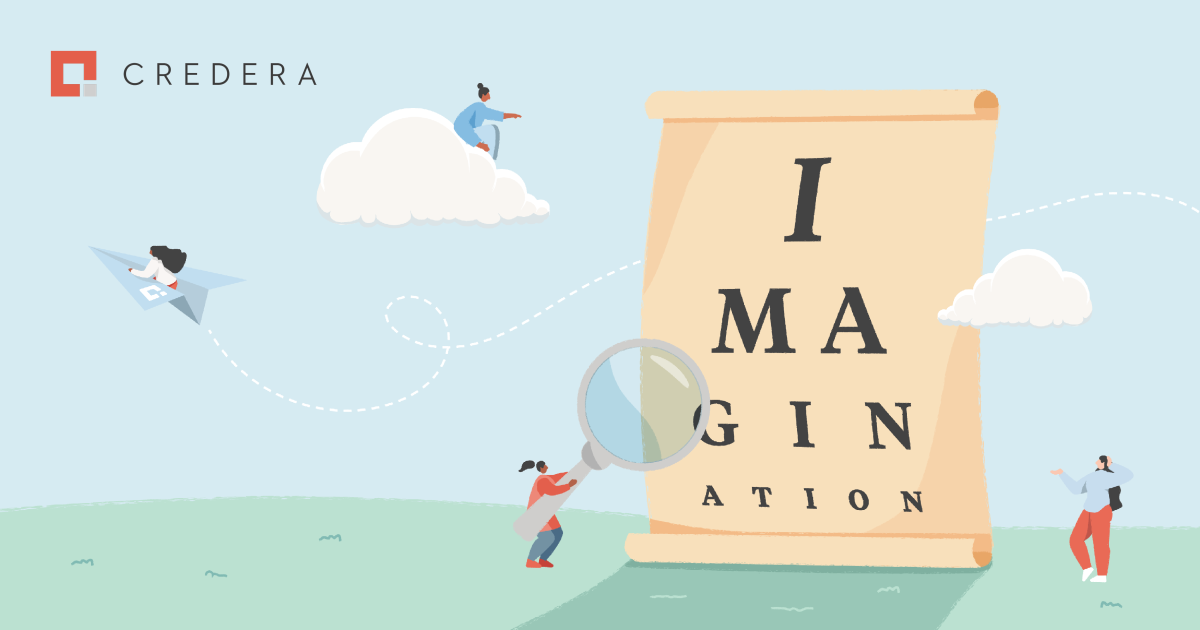
A few weeks ago, I took my youngest daughter to her annual wellness checkup. At the end we were shuffled into another room for the eye exam portion, which was supposed to be a quick check, and we’d be on our way.
This was good given the long list of meetings, follow-ups, to-dos, and everything else waiting for me that afternoon. If we could whip through this, I could be back in time for a chance at tackling a good chunk of it. The nurse came in and handed my daughter the black eye cover thingy, told her to cover her left eye, and asked her to tell her what she saw.
Beaming with pride and excitement, my daughter blurted “A robot!”
We chuckled, and I said, “No honey, for real, what letters do you see?”
“It’s an elephant with a broken trunk!”
OK, she’s just being silly and thinking about our favorite Mo Willems book. She should’ve been reading the black-and-white text in front of her—“E-F-P-T-O-Z.” Instead she offered…
“It’s a flowerpot house for a baby bumble bee!” “It’s a monkey eating a banana.” “It’s a…”
I was not pleased. The nurse was being more patient than me but, given the look of the waiting room, didn’t appear to be pleased either.
In that moment, all I wanted to do was get the eye exam done, check this appointment off our list, and go. My daughter was too old for this. I apologized profusely to the nurse, gave my daughter “the look,” and threatened no iPad and bribed her with ice cream in the same breath. All I got was more silliness.
“It’s a rainbow that’s telling jokes!” “What? That doesn’t even make sense,” I said with annoyance.
She didn’t technically “fail” the eye exam, but as the nurse sighed and said we should just go and reschedule for another time, I definitely felt like she had.
Later that afternoon, as my daughter colored at the kitchen table, I paused, looked at her, and had a small epiphany. Yes, she was absolutely being silly at the doctor’s office, but there was something more to it.
We showed her something very straightforward and gave her a simple task—tell us the letters. But she saw something totally different. And she didn’t stop even when we asked; she didn’t let it go. The more she looked, the more she saw—and the more her creativity and imagination took hold.
Too often that impulse is tamped down. It starts at a young age.
“Stay in the lines.” “Follow these instructions.” “Just get it done.” “Stop wasting time.”
And sure, there’s a time and place for all that. But we are rarely encouraged to flex in the other direction. We aren’t encouraged to see something that’s not there or to explore where that idea or vision might go. That muscle is woefully under-developed in most adults.
I’ve spent my career in the field of design and building teams that help clients launch great experiences and achieve the unexpected. In that very moment in my kitchen I was reminded that seeing things that aren’t there is exactly what my career in experience design, design thinking, and innovation has been all about. Here’s what I mean.
Envision Something New to Inspire Others
Designing great experiences or uncovering innovation opportunities requires envisioning something that doesn’t yet exist; something that inspires others to see what “better” could look like. That vision must motivate cross-functional teams and lingering nay-sayers and get them to believe it’s possible—and then get them to jump in the proverbial boat and all row in that direction.
It’s not easy, but if we never daydream about what’s out over that horizon line, we’ll stifle our creativity and be stuck with a bunch of average solutions. I want more than that, and I’m pretty sure our clients do, too.
See Beyond the Initial Ask
Clients often ask for something specific, and we could absolutely answer that. But what makes for a great partnership is understanding when to look further, when to stretch the thinking and arrive at high-impact solutions no one saw coming with the initial ask.
Find Empathy by Asking, “What Am I Missing?”
Asking about what you’re not seeing is an easy way to flex our empathy muscles. We all come to a situation with our own lens that shapes our perception of it. That’s OK, to an extent, but often leaves holes in understanding, creates friction, or causes missed opportunities.
In-depth user research is a formal approach to answering that very question. It’s how we see things from another perspective—things we can’t see ourselves—and uncover interesting, new points of view and insights that change the way we solve a problem.
Keep Exploring
Sometimes an acceptable answer is right in front of you, but it’s worth exploring what else exists in the space surrounding it. In design, we run an exercise where we have 15 minutes to come up with possible solutions to a problem. There are usually lots of great ideas generated initially.
But the fascinating thing is what happens later that day, or even in the week or two that follows, when your subconscious mind spends time thinking deeply through the problem, exploring “what if” scenarios, meandering in possibilities.
I’ve had team members come back to me a week later and share these ideas that have formed outside the timebox, and nine times out of 10 they are more interesting or creative solves, even delightfully simple and sound.
In our fast-paced world, we don’t always have the luxury of time. I get that. But carving out whatever pockets of it you can is critical to seeing new ways and better solutions.
Things Aren’t Always as They Seem
I’ve walked onto teams or into situations where if I had only seen what was on the surface, what was clearly presented, I would have missed critical nuances and deeper understandings that were critical to any form of success.
Observing what can’t be seen is part of leadership and creating healthy dynamics within thriving teams. It’s part of seeing potential in people who can’t yet see it in themselves and then holding on and pushing them until they can. It’s about seeing the positives when things get tough—it’s when all the positives seem invisible that it’s most critical to see beyond the fray, find them, and help others see them too.
I could go on and on about how seeing things that aren’t there has shaped my career, has made me the leader and teammate I am today, and has inspired my teams and clients along the way.
You may have your own versions of how this concept shows up for you and your teams. Lean into that. Practice it. Make a habit of pushing yourself and the people around you to pause, set their view further than what’s expected, believe in things that aren’t yet there, and see further than the black and white “E-F-P-T-O-Z” of any situation.
Last night my daughter and I were laying on our backs on our backyard trampoline, gazing up at the summer sky and passing clouds.
“Mom, do you see that puppy having a tea party with that white fluffy rabbit?”
“Yes, I do.… I absolutely do.”
Come Grow With Us
Seeing something more in a situation is a critical skill for solving problems and designing experiences. For additional information about Credera’s Experience Design practice, please visit our Experience Design page.
Contact Us
Ready to achieve your vision? We're here to help.
We'd love to start a conversation. Fill out the form and we'll connect you with the right person.
Searching for a new career?
View job openings

